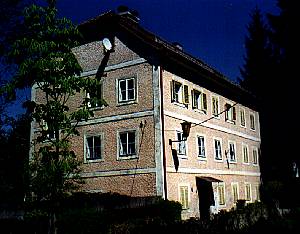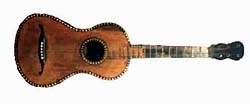Joseph Mohr Gallery |
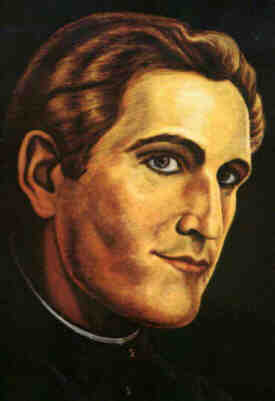 |
Fr. Joseph Mohr
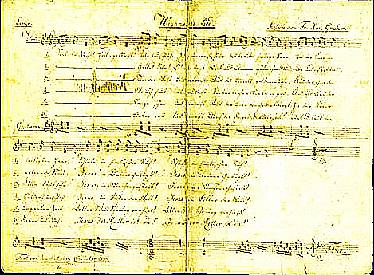
This manuscript by Fr. Joseph Mohr is the oldest-known arrangement of "Stille Nacht! Heilige Nacht." Joseph Mohr was born on December 11, 1792, in Salzburg, Austria to a poor spinster knitter, Anna Schoiber. His father, Franz Joseph Mohr, served in the army as one of the archbishop's musketeers and left Anna and his son to fend for themselves. While his exact place of birth is unknown, church records show he was born in the "Old Town" near the cathedral (the Dom), where he was baptized a few hours later. The youngster grew up in another area of the city (the "New Town") across the Salzach River. He was raised in extreme poverty in a small room at 31 Steingasse where he and his mother lived with his elderly grandmother. (This information was found in census records in 1998 by historian Manfred Fischer.) Joseph's godfather was Franz Joseph Wohlmuth, the town's executioner. The cathedral choir-master, Johann Nepomuk Hiernle, became a foster-father to the young student, and recognizing his musical talent saw to it that he received a proper education. Joseph attended classes at the famous grammar school in Kremsm�nster, Upper Austria, where he received honors for his work. Joseph Mohr completed his education at the archdiocesan seminary in Salzburg and was ordained as a priest on August 21, 1815. His first assignment took him to Mariapfarr in the Lungau region of the Salzburg province. While working at the pilgrim church in Mariapfarr, it is assumed that he had opportunity to meet with his grandfather who lived in Stranach, a village which is a 30 minute walk to the south. See photo album. During his service in the Alpine village, Joseph produced a poem, "Stille Nacht! Heilige Nacht!" Many have speculated about his inspiration for the poem, but we may never know the reason. Due to poor health, he was sent to Salzburg for hospitalization and when he recovered, was assigned to St. Nicholas Church in Oberndorf (1817). It was there that the assistant pastor met and became friends with the Arnsdorf schoolmaster and church verger, Franz Xaver Gruber, who also served as organist at St. Nicholas. On December 24, 1818, Fr. Joseph Mohr, took a 20 minute walk to Arnsdorf and changed the tenor of Christmas musical celebrations forever.
Fr. Mohr lived on the upper floor at the far end of this building during his assignment to St. Nicholas Church in Oberndorf. It is located behind the Silent Night Memorial Chapel. An account of the creation of the world's best-loved Christmas carol can be seen in the Franz Gruber Gallery, in Gruber's own words. What we don't know, is why the carol was composed. A story in the early 20th century claimed that the church organ was not working but there are no church or diocesan records to back up this claim. In a 1967 book there is a silly tale of mice eating the organ bellows (easily repaired). After a great deal of research, most historians feel that Fr. Mohr, due to his love of guitar music, simply wanted a Christmas song that he could play on his guitar. One modern-day writer, hoping to sell a film script, claims that Gruber most likely was responsible for the organ not working. Perhaps this is a way of placing conflict into a filmscript, but it doesn't help serious historians. The story is simple and needs no embellishment. Joseph Mohr wrote the poem in 1816 and Franz Gruber wrote the music on Christmas Eve in 1818. In 1819, Fr. Mohr was transferred from Oberndorf and somewhere between that time and 1821 he wrote out an arrangement of the carol. This document was discovered in 1995 and, after it was authenticated by handwriting experts and historians, has been proclaimed the earliest known manuscript of "Stille Nacht." In addition, it disproves the claims of some critics who felt that Michael Haydn had actually written the music. Fr. Mohr gives full credit to his friend Gruber, for in the upperhand right corner he wrote "Melodie von Fr. Xav. Gruber." Joseph Mohr never forgot his collaboration with Franz Gruber. An article in the old "Salzburg Chronik" tells of a visit by some seminarians to Wagrain, where Fr. Mohr was pastor. It reads as follows: The article goes on to say that the seminarians drank a toast to the two men who created the carol with Joseph Mohr joining the salute to his good friend, Gruber.
Joseph Mohr served ten years in the parish at Wagrain, now a beautiful Alpine ski resort. See photo album. He was greatly loved by the people in his area, and when he died, December 4, 1848, he was as poor as when he entered the world having given all his earnings to the education of the youth in the parish and the care of the elderly. The Joseph Mohr School is located across the street from his grave in the churchyard at Wagrain.
|
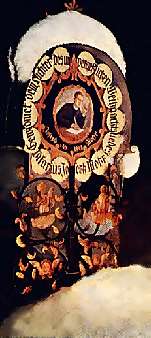 |
